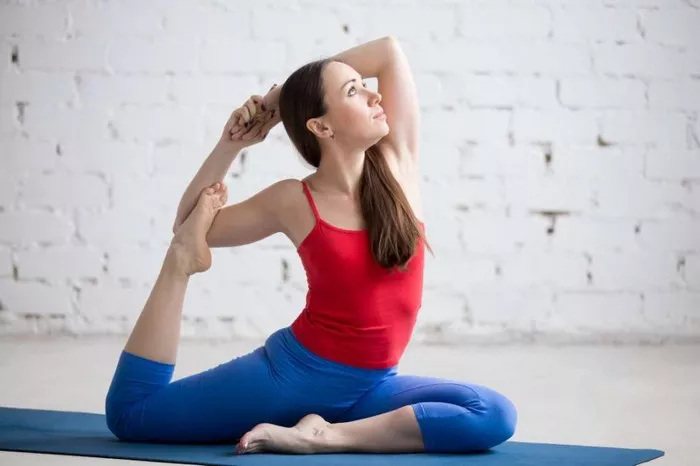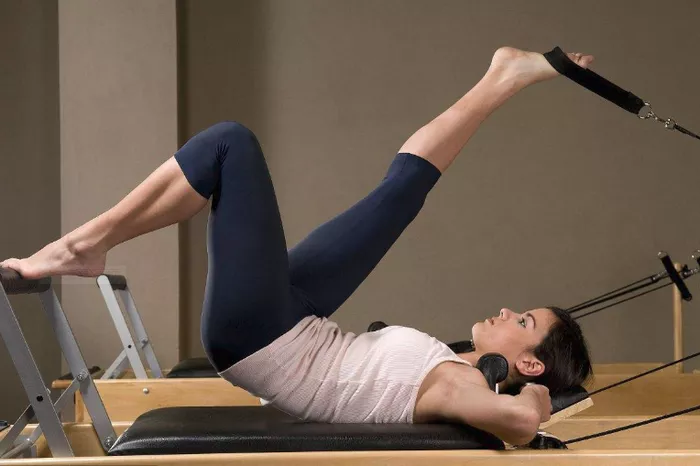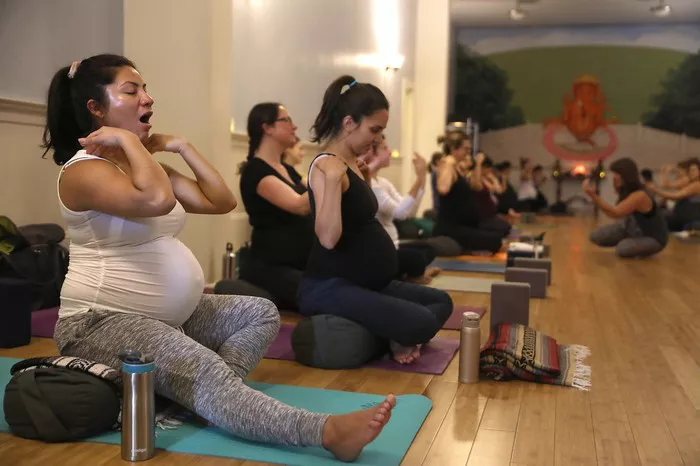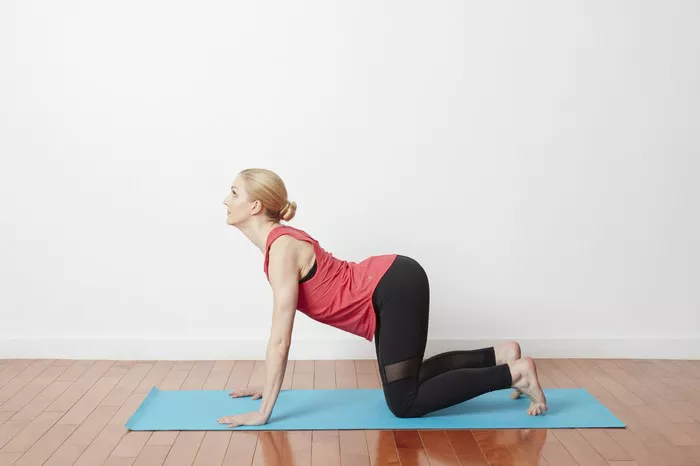In today’s fast-paced world, finding time for a workout can often feel like a luxury. However, even amidst hectic schedules, dedicating just 20 minutes to a power yoga routine can invigorate your body, boost your energy levels, and enhance your overall well-being. This article presents a precise and effective 20-minute power yoga workout routine designed to help you build strength, flexibility, and focus.
Preparation: Set the Stage for Success
Before diving into your power yoga routine, it’s essential to set the stage for success. Find a quiet, well-ventilated space where you can move freely without distractions. Lay out a yoga mat to provide cushioning and stability for your practice. Dress in comfortable, breathable clothing that allows for unrestricted movement. Additionally, keep a bottle of water nearby to stay hydrated throughout your workout.
Warm-Up: Prepare Your Body for Movement (5 minutes)
To prepare your body for the dynamic movements ahead, begin with a brief warm-up sequence. Start in a comfortable standing position at the top of your mat.
1. Mountain Pose (Tadasana): Stand tall with your feet hip-width apart, arms relaxed by your sides, and palms facing forward. Engage your core, lengthen your spine, and roll your shoulders back. Take several deep breaths, grounding yourself into the present moment.
2. Neck Rolls: Gently lower your chin towards your chest and begin to roll your head in a clockwise motion, then switch to counterclockwise. Move slowly and mindfully, releasing tension in the neck and shoulders.
3. Arm Circles: Extend your arms out to the sides at shoulder height. Make small circles with your arms, gradually increasing the size of the circles with each rotation. Reverse the direction after several repetitions.
4. Forward Fold (Uttanasana): From standing, exhale as you hinge at the hips and fold forward, bringing your hands towards the mat or resting them on your shins. Bend your knees as much as needed to maintain a straight spine. Relax your neck and let your head hang heavy.
5. Halfway Lift: Inhale as you lift halfway up, lengthening your spine and reaching your chest forward. Keep your back flat and gaze slightly ahead to maintain alignment.
6. Downward Facing Dog (Adho Mukha Svanasana): Plant your palms on the mat and step back into a high plank position. Press back through your hips, lifting your tailbone towards the sky to form an inverted V shape with your body. Pedal out your feet to stretch the calves and hamstrings.
Main Sequence: Build Strength and Flexibility (10 minutes)
Once you’ve warmed up your body, transition into the main sequence of your power yoga workout. Flow through each pose with controlled movements, focusing on your breath and maintaining proper alignment.
1. Sun Salutation A (Surya Namaskar A): Begin in Mountain Pose at the top of your mat. Inhale as you reach your arms overhead, then exhale as you fold forward into Uttanasana. Inhale to a Halfway Lift, then exhale to step or jump back into a high plank position. Lower down into Chaturanga Dandasana, then inhale into Upward Facing Dog (Urdhva Mukha Svanasana). Exhale to lift your hips into Downward Facing Dog. Hold for several breaths, then step or jump to the top of your mat and repeat the sequence.
2. Warrior I (Virabhadrasana I): From Downward Facing Dog, step your right foot forward between your hands, aligning your knee directly over your ankle. Spin your back foot flat on the mat at a 45-degree angle. Inhale as you reach your arms overhead, stacking your shoulders over your hips. Square your hips towards the front of the mat and gaze forward. Hold for several breaths, then repeat on the other side.
3. Warrior II (Virabhadrasana II): From Warrior I, open your hips and shoulders to the side as you extend your arms parallel to the floor, palms facing down. Keep your front knee bent at a 90-degree angle and gaze over your front fingertips. Hold for several breaths, then switch sides.
4. Triangle Pose (Trikonasana): Straighten your front leg in Warrior II and shift your hips back as you reach your front hand forward, lowering it to your shin, ankle, or the floor. Extend your top arm towards the sky, stacking your shoulders. Gaze up towards your top hand or down towards the mat, depending on your neck comfort. Hold for several breaths, then switch sides.
5. Chair Pose (Utkatasana): Return to Mountain Pose at the top of your mat. Inhale as you sweep your arms overhead, then exhale as you bend your knees and sink your hips back as if sitting in an imaginary chair. Keep your weight in your heels and your chest lifted. Hold for several breaths, engaging your core and thighs.
6. Plank Pose (Phalakasana): From Chair Pose, fold forward and plant your palms on the mat. Step or jump back into a high plank position, shoulders stacked over wrists and core engaged. Keep your body in a straight line from head to heels, avoiding sagging or arching. Hold for several breaths, building strength in your core and upper body.
7. Chaturanga Push-Up: From Plank Pose, lower down halfway, keeping your elbows hugged close to your ribs. Pause for a moment, then press back up to Plank. Repeat for several reps, maintaining control and integrity in your movements.
8. Upward Facing Dog (Urdhva Mukha Svanasana): From Chaturanga, flip your feet so the tops of your feet press into the mat. Inhale as you straighten your arms and lift your chest, rolling your shoulders back and down. Keep your thighs and hips lifted off the mat, engaging your core for support.
9. Downward Facing Dog (Adho Mukha Svanasana): Exhale as you lift your hips up and back, returning to Downward Facing Dog. Take several breaths here, pedaling out your feet and lengthening through your spine.
Cool Down: Restore and Rebalance (5 minutes)
After completing the main sequence of your power yoga workout, take time to cool down and restore balance to your body and mind.
1. Child’s Pose (Balasana): From Downward Facing Dog, drop your knees to the mat and sit back on your heels. Extend your arms forward and rest your forehead on the mat, allowing your spine to lengthen and your hips to sink towards your heels. Take several deep breaths, surrendering any tension or stress.
2. Seated Forward Fold (Paschimottanasana): From Child’s Pose, transition to a seated position with your legs extended in front of you. Inhale to lengthen your spine, then exhale as you fold forward from your hips, reaching towards your feet. Keep your spine long and avoid rounding your back. Hold for several breaths, feeling a gentle stretch along the back of your legs and spine.
3. Reclining Spinal Twist (Supta Matsyendrasana): Lie on your back with your arms extended out to the sides in a T position. Bend your knees and draw them towards your chest. Exhale as you drop both knees to one side, keeping your shoulders grounded. Gaze in the opposite direction of your knees, feeling a gentle twist through your spine. Hold for several breaths, then switch sides.
4. Happy Baby Pose (Ananda Balasana): From your back, bend your knees and draw them towards your chest. Reach for the outsides of your feet or ankles, bringing your knees towards your armpits. Keep your tailbone grounded as you gently rock from side to side, massaging your lower back and hips.
5. Corpse Pose (Savasana): Extend your legs and arms comfortably alongside your body, palms facing up. Close your eyes and allow your entire body to relax into the mat. Release any tension in your muscles and surrender to the present moment. Remain in Savasana for several minutes, soaking in the benefits of your practice.
Conclusion
In just 20 minutes, you can harness the transformative power of yoga to strengthen your body, increase flexibility, and cultivate inner peace. This precise and efficient power yoga workout routine targets key muscle groups while promoting mindfulness and focus. By incorporating dynamic movements, breath awareness, and intentional sequencing, you can maximize the benefits of your practice in a short amount of time.
Whether you’re a seasoned yogi or new to the practice, committing to regular 20-minute yoga sessions can have a profound impact on your physical and mental well-being. By prioritizing self-care and carving out time for movement each day, you can enhance your energy levels, reduce stress, and cultivate a greater sense of balance in your life.






















